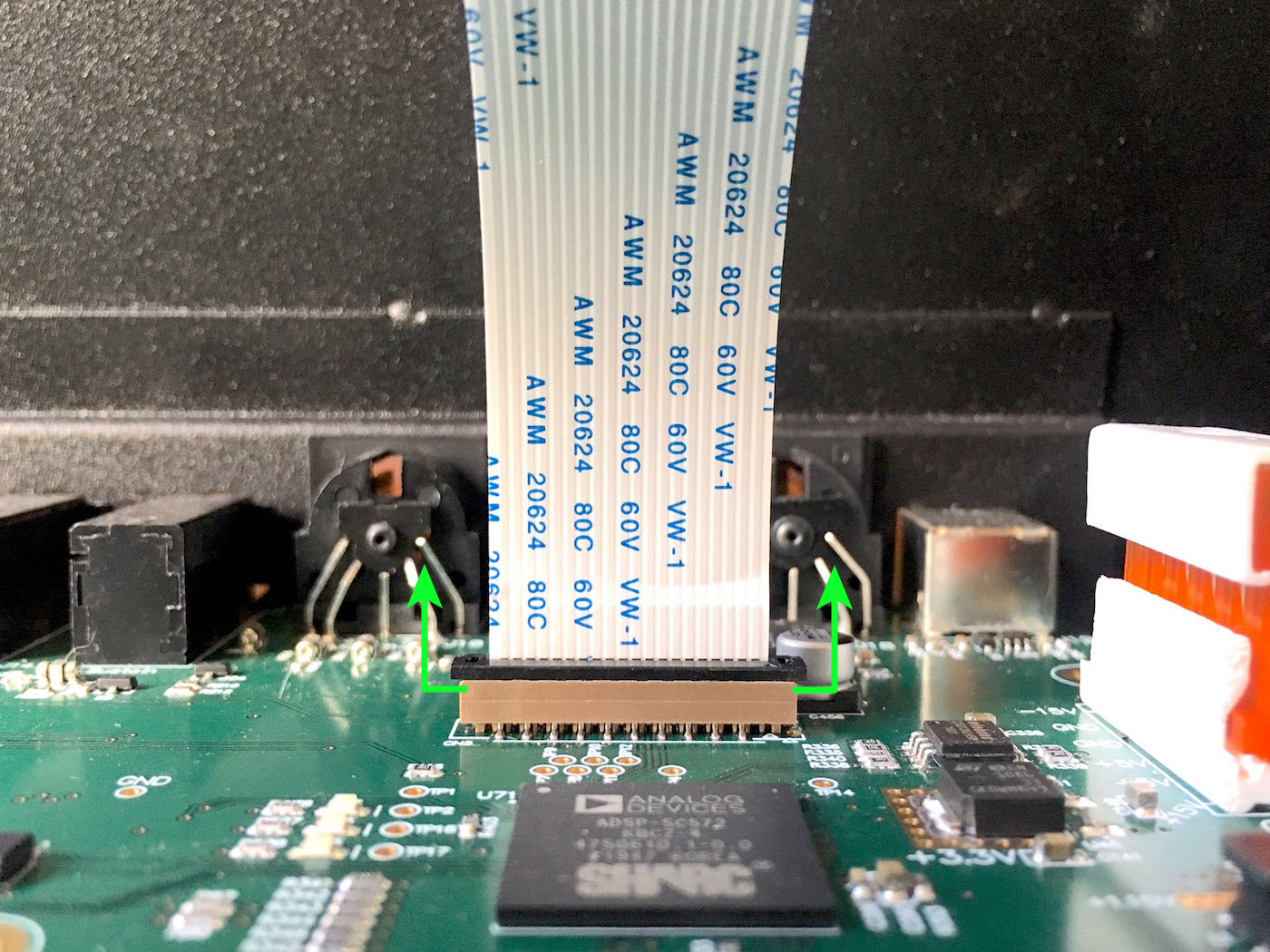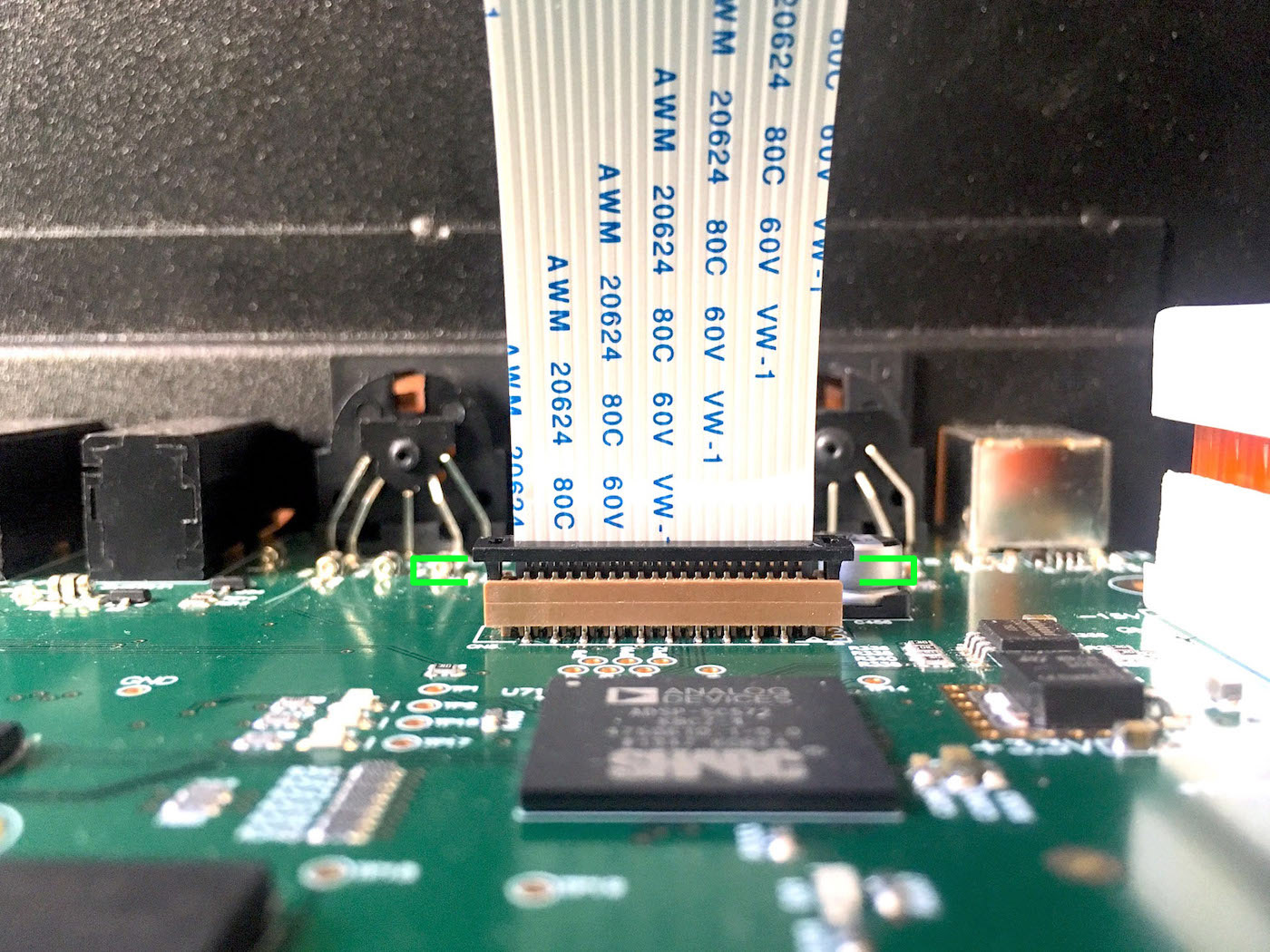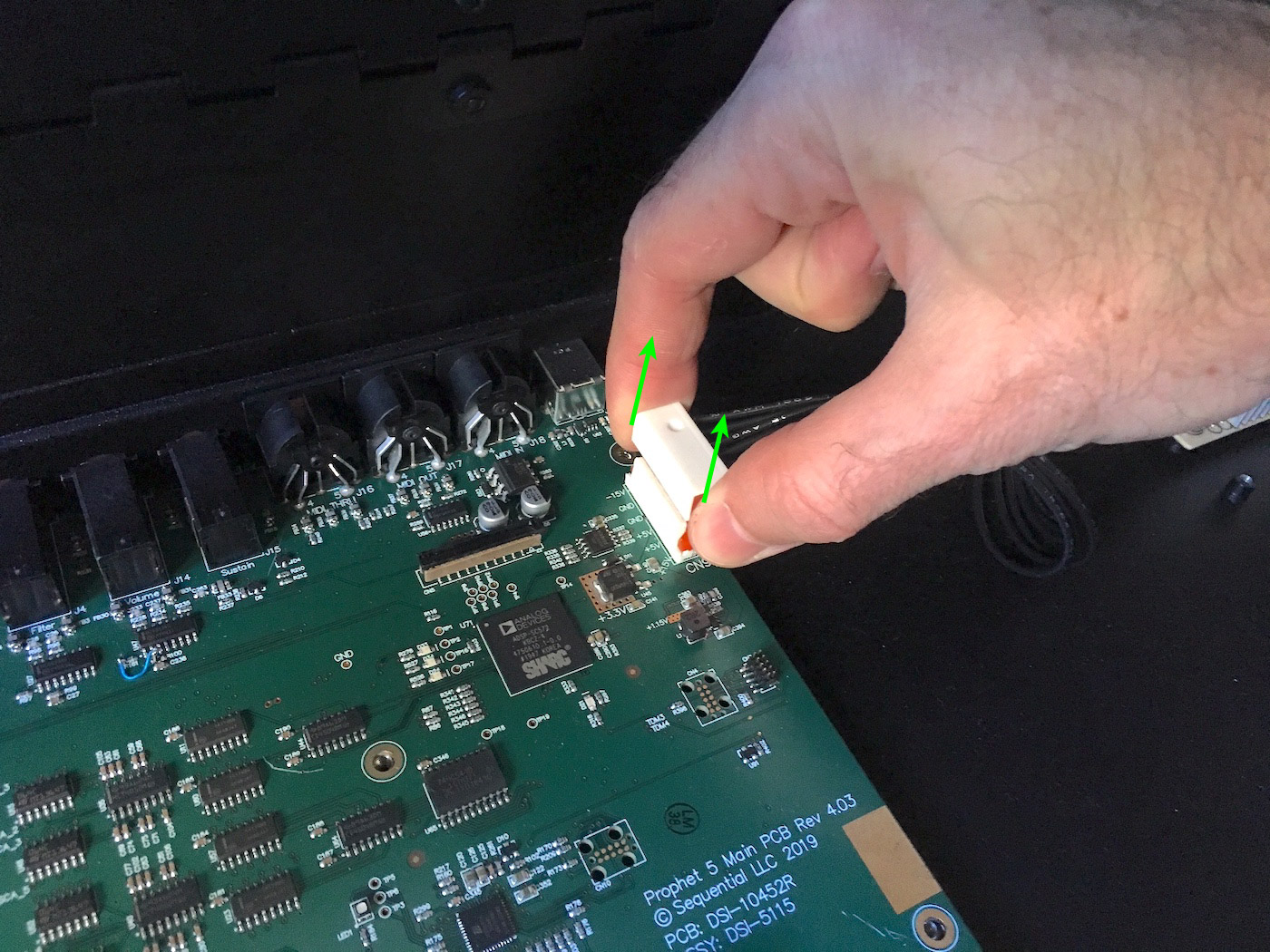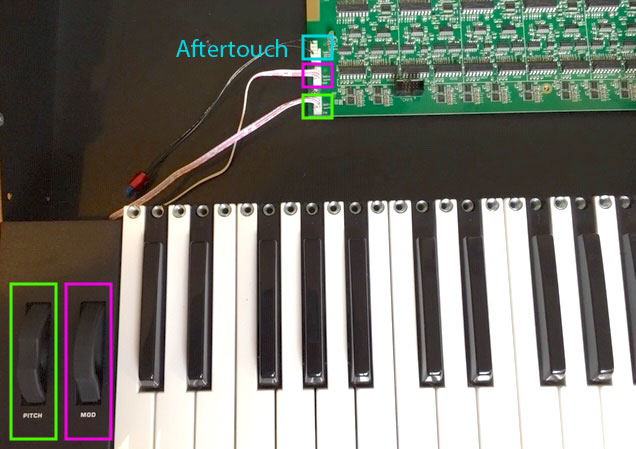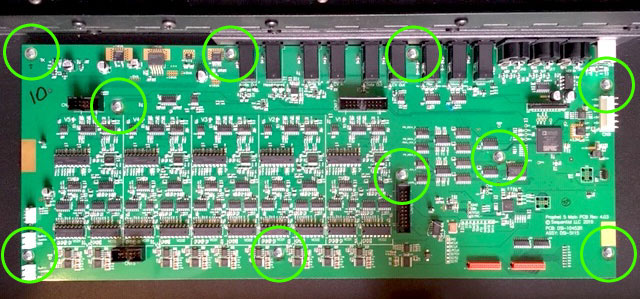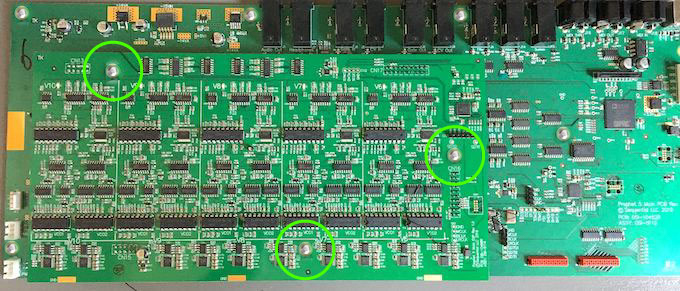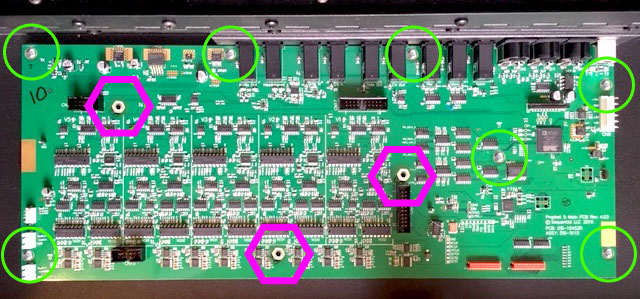Prophet-5 & Prophet-10 Main Board Removal
Removing or replacing the main board in the Prophet-5 or Prophet-10 is easy, and only requires a couple basic hand tools.
Tools needed: Phillips head screwdriver and a 9/16″ socket/nut driver (pliers will work too). A 1/4″ nut driver (or small crescent wrench/pliers) is necessary for the Prophet-10.
Getting inside the Prophet- 5 & Prophet-10:
1. First, unplug all power/MIDI/USB/audio cables.
2. The audio and pedal jacks on the rear of the Prophet-5 and Prophet-10 are held in place with nuts and washers. Using a 9/16″ socket/nut driver or a pair of pliers, remove all 9 nuts. The washers will come off by hand once the nuts have been removed.

Rear Jacks
- Note: Wood is sturdy but delicate, and can be scratched or damaged if you’re not careful. Take your time to ensure your wood remains in pristine condition during disassembly and reassembly.
3. Now remove the 6 screws on each of the wooden sides.
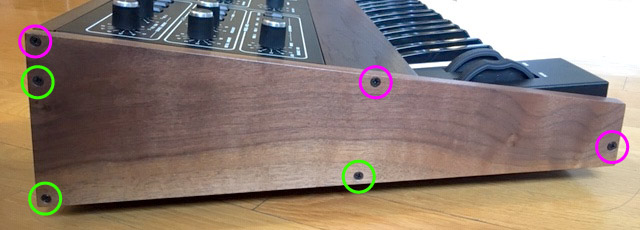
Left Wooden Side
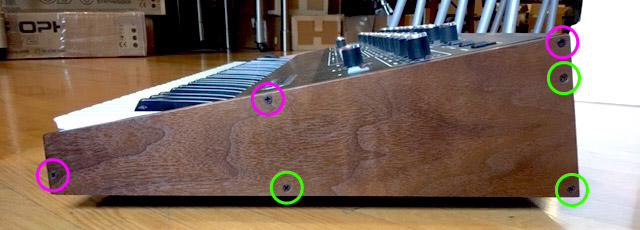
Right Wooden Side
- Note: There are two different types of screw, take care to keep them organized.
4. Underneath the left wooden side, remove the upper 3 screws from the metal.
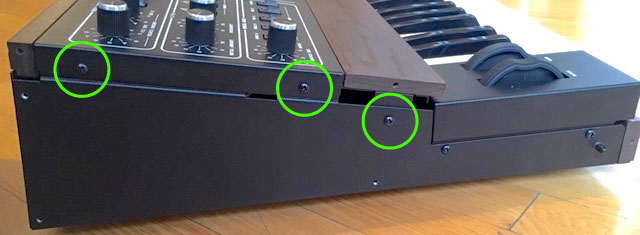
Left Side Screws
5. Underneath the right wooden side, remove the upper 3 screws from the metal.
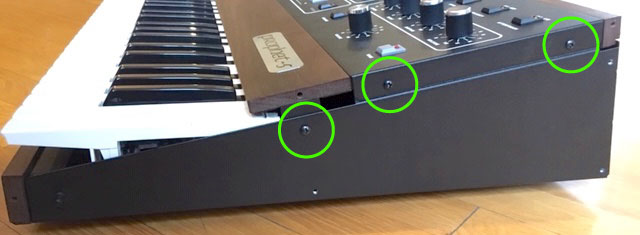
Right Side Screws
You can now lift the lid open from the front. It is hinged and it will stay open with the attached lanyard.
Removing the main board:
1. The main board is sitting in the tray above the keybed. On the upper right, there is a thin FFC ribbon cable running between the right panel board and the main board. The ribbon cable connector on the mainboard has a locking mechanism. Release the cable by grasping both sides of black connector top with your fingers/fingernails. Carefully pull upward/vertical with light force. The locking mechanism only moves a couple millimeters to reach its fully unlocked position. The ribbon cable will easily slide straight out once the connector is unlocked.
- Note: The locking mechanism is delicate. Take care to only pull it up by the amount required to unlock it. If too much force is applied the connector will be damaged.
2. Also in the upper right is the power socket, it’s a white vertical rectangle with a white and orange connector. Gripping the connector itself, pull straight up with a slight side to side wiggle to remove it. DO NOT pull on the wires.
3. There are two cables with small red/orange connectors coming from underneath the keybed. They are folded under themselves. Take note of their orientation as they must be reinstalled in the same way. Place your index finger beneath the cable’s connector, parallel to its receptacle, and your thumb on top of the ribbon’s connector. Remove the ribbon cable by pulling up and rocking the connector out of the receptacle with light force.
- Note: There is a small set pin on the left side of each connector, and a hole in the main board to the left of each connector socket. When reinstalling the keybed ribbon cables, make sure the pin is aligned in the hole.
4. On the lower left of the main board there are 3 small white connectors in a vertical row. They are for Aftertouch, Mod Wheel, Pitch Wheel. They are all labeled on the board. The aftertouch cable is black, while the pitch and mod wheel cables have red stripes. Gripping the connector directly, pull straight up with a slight wiggle to remove. DO NOT pull on the wires.
- For Prophet-10 models, skip to “Removing the voice expansion”
5. Remove the 10 screws securing the main board. Holding the keybed connectors out of the way, slide the main board toward the keybed until the audio jacks are free from the metal enclosure and lift it out.
- This completes the procedure for removing the Prophet-5 main board. Skip to the end of this document for reassembly notes.
Removing the voice expansion (Prophet-10 only):
1. The voice expansion board sits on top of the main board in the tray above the keybed. Remove the 3 screws securing the voice expansion to the main board.
2. The voice expansion board has 4 connectors on the underside, sitting in sockets on the main board. The connector locations are easy to identify by finding the pairs of parallel soldered pins near the top, right, and bottom edges of the board. To remove the voice expansion, start at the back edge near the audio jacks and place your index fingers under the voice board near the connector locations. Applying medium force, alternate between each connector to slowly pry the 2 rear connectors free.
- Note: To avoid damage, take care to stop pulling as soon as the connectors are free as the 2 front connectors will still be attached.
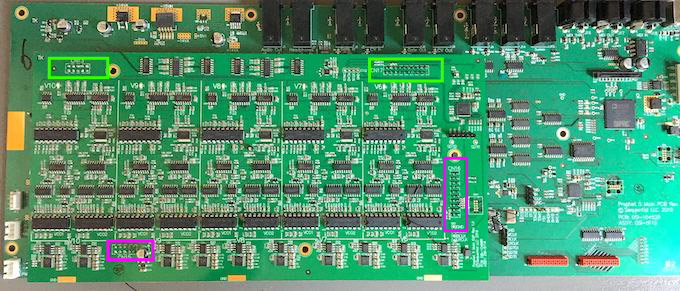
P10 Voice Expansion
3. Move to the front connector locations and repeat the process. The front right connector will be fairly easy to remove. Use the same technique of alternating sides while pulling up slowly to wiggle the front left connector free. The voice expansion can now be lifted out and set aside.
Removing the main board (Prophet-10 only):
- The main board is secured by 3 standoffs and 7 screws. Remove the 3 standoffs using a 1/4″ nut driver or small crescent wrench, then remove the remaining screws.
*IMPORTANT*: The standoffs are soft metal and they can be damaged if too much force is applied when re-installing them. DO NOT over-tighten.
2. Holding the keybed connectors out of the way, slide the main board toward the keybed until the audio jacks are free from the metal enclosure and lift it out.
Reassemble the Prophet-5 or Prophet-10 in the reverse order:
1. If you have a Prophet-10, take care to align the pins on the connectors between the voice expansion and the mainboard. Press the voice expansion into place with medium force and once it’s fully seated, reinstall the 3 screws to secure it.
2. The top panel tends to lay a little too far forward when at rest. While the screws will still go in, the wood may be slightly out of alignment without some attention to detail.
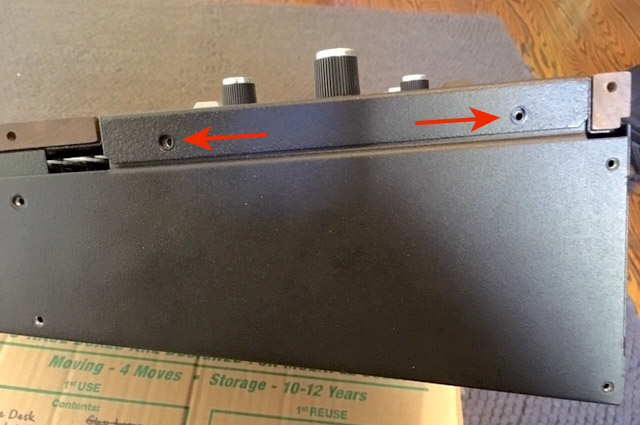
Lid Resting
3. Take care to center align the top panel screw holes with the threads in the bottom panel. For the rear screw, this often means pushing down on the top panel or squeezing the top and bottom panel together with one hand while inserting and tightening the screw with the other. As long as it’s aligned front-to-back, the other two holes should also be aligned.
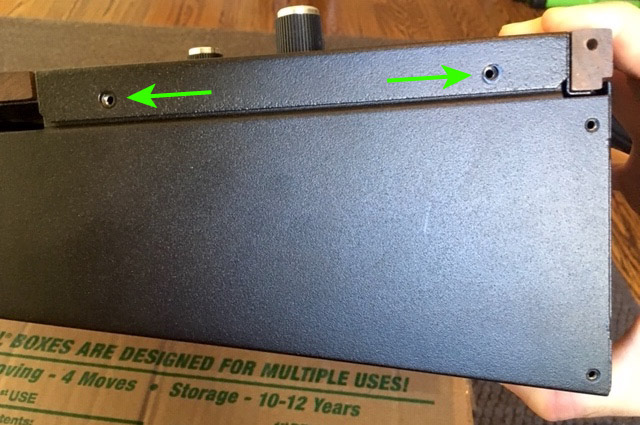
Lid Adjusted
- Note: Also pay attention to the vertical orientation of the hole and keep it centered on the threads, if pushed too far down the wood may not align properly.
4. When reinstalling the wood sides, put the top rear screw in first and align that corner with the wood trim.
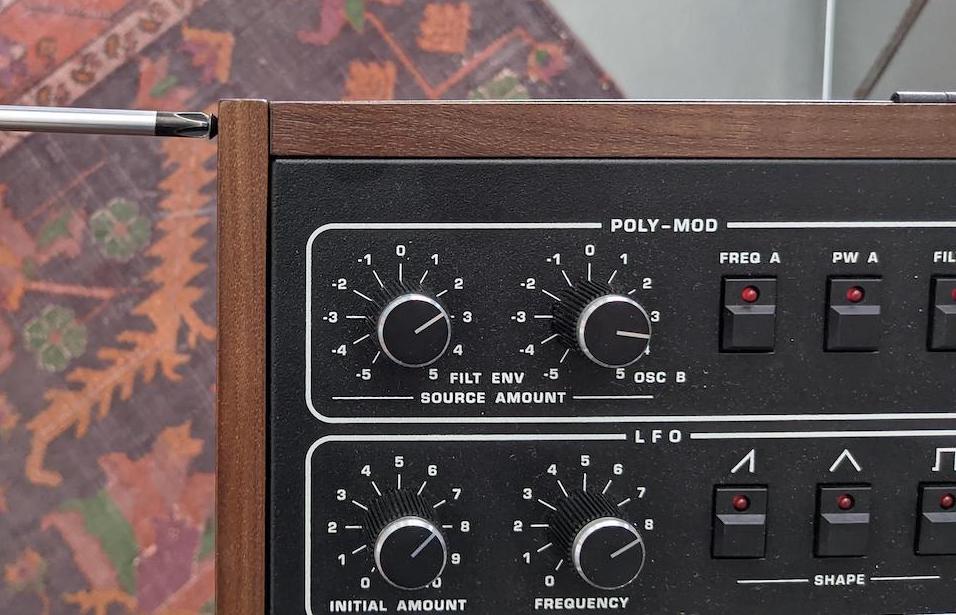
Corner Screw
5. If, in step 2, you pushed/squeezed the top panel down too far, the second screw down in the rear doesn’t align with the threads in the metal. One way to check that is by looking at the gap in the back between the hinge and the ends. It should be the same width (top to bottom) all the way across.
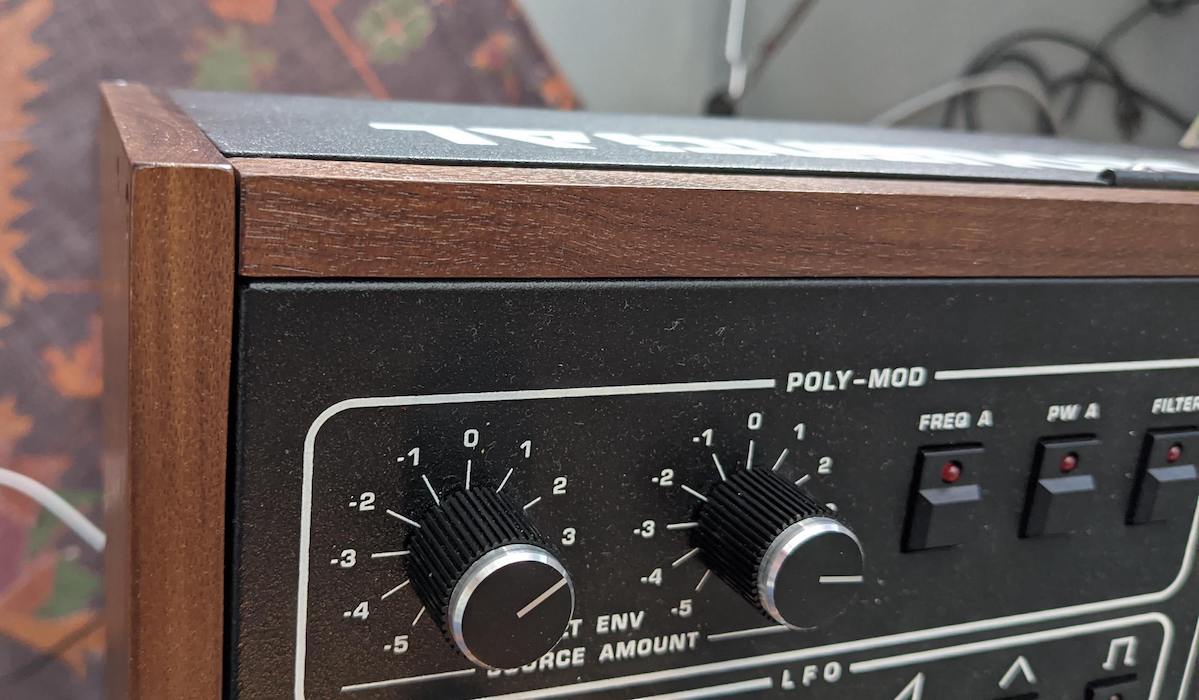
Wood Side Alignment
- Note: Typically, it’s wider at the ends of the instrument, so when you push/squeeze it together it evens out. But it is possible to squeeze it too much which results in the gap being narrower at the ends.
6. After that, any order for the remaining screws will work. Position the front edge of the side panel as flush to the font wood trim as you can.
Recalibrating the oscillators and filters:
1. After replacing the main board, the Prophet-5 and Prophet-10 should be recalibrated. Plug in the power cable and turn the unit on.
2. Press and hold the Record switch, and while holding press Tune. This resets the calibration table. Recalibrate the unit by pressing the Tune button.
- Note: The calibration table will need to be repopulated at various temperatures before the instrument feels like it’s not “going out of tune”. We recommend tuning immediately after power up when it’s cold, again as it warms up, and again when it’s been on for several hours in your normal working environment. In short, press Tune anytime the instrument sounds out of tune or when you bring it to a new location, and before long you’ll rarely have to tune it again.
Please contact Sequential Technical Support if you have any questions regarding the above procedure.

